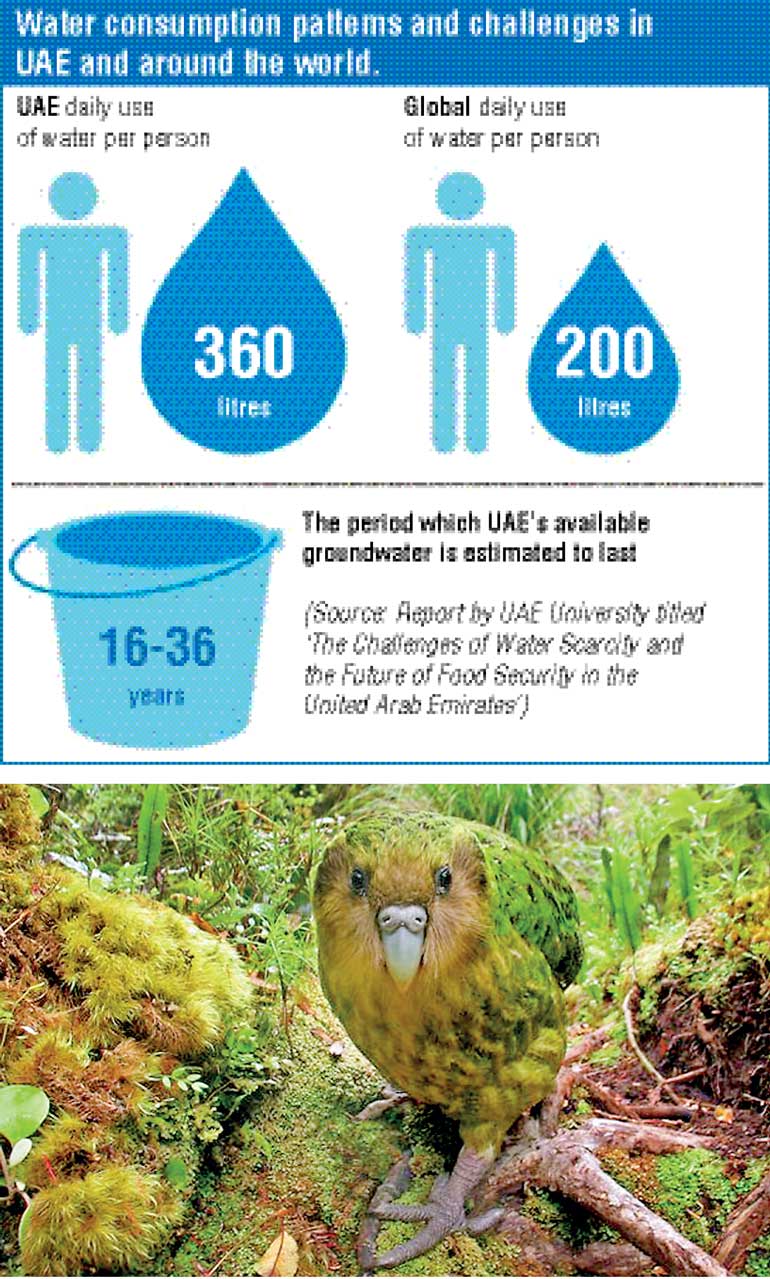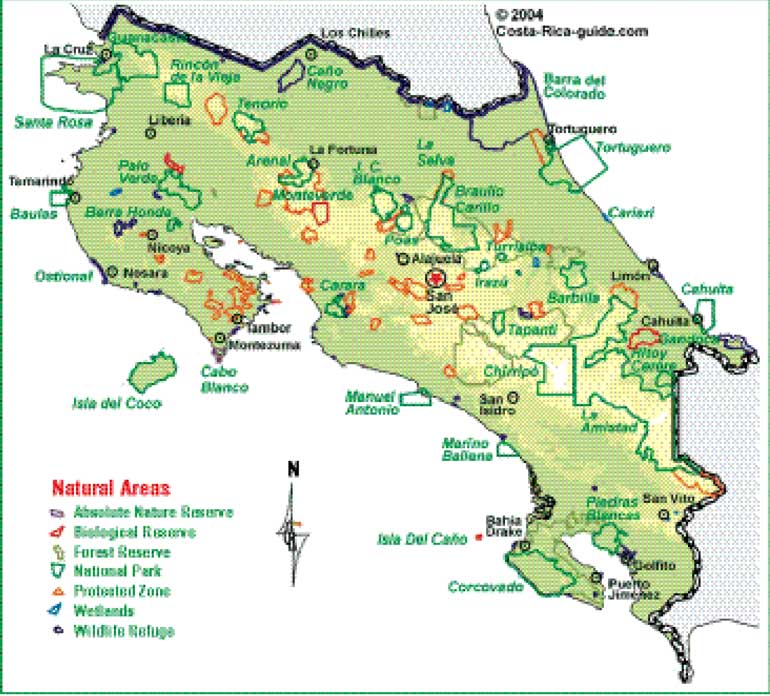Friday Nov 14, 2025
Friday Nov 14, 2025
Wednesday, 31 May 2017 00:00 - - {{hitsCtrl.values.hits}}
 I was recently watching a documentary about New Zealand and its amazing wildlife. As many know, New Zealand was only discovered around 700 years ago by Polynesians who settled there and established a Maori culture. It is one of the last discovered large land masses globally.
I was recently watching a documentary about New Zealand and its amazing wildlife. As many know, New Zealand was only discovered around 700 years ago by Polynesians who settled there and established a Maori culture. It is one of the last discovered large land masses globally.
In 1642 a Dutch explorer was the first European to sight the islands when in the late 18th century the country was regularly visited by explorers, sailors, missionaries, traders and other adventurers; predominantly from Europe.
In the 19th century the British signed the Treaty of Waitangi with the Maori chiefs of New Zealand which seemed a good deal, however subsequently an extensive British settlement led to an imposition of a European economic and legal system as well as most of the land passing from Maori to European ownership; many Maori subsequently became impoverished. After the World War II a welfare state was developed and many Maori began moving into the cities, establishing also a protest movement. In turn the Treaty of Waitangi received greater recognition.
While New Zealand’s history is undeniable interesting, what caught my attention was another sort of development which took place once the islands were discovered. The settlers from Polynesia more or less assimilated to the bio-diverse country and lived in close relationship with nature. They also left murals in different caves across the country confirming the existence of extremely large birds, such as the Waitaha Penguin, the Giant Moa or the Haast’s eagle (which could reach a size of 230kg), which went extinct soon after the first Polynesian settlers arrived in the 14th century.
Another area of extinction took place during the European settlement period in the 19th century. Where the first settlers were hunting the ancient animals towards their extinction, the second group of settlers caused various influences on the natural habitat, not only through hunting. It is believed that the pacific rat was already introduced by the Maori, the large numbers of ships departing from Europe had several animals and pests coming to New Zealand “illegally”, such as the common house mouse and European rats for example.
Others were imported for different purposes: Possums were brought from Australia for fur, salmon was released into the rivers to be later hunted by sports fishermen, marten were released for pest control, stoats and cats were brought from England to control rabbits and the rats on the ships, pigs and goats were introduced to the farmers and deer was introduced for hobby hunters.
These animals were not only competition for the native animals, they often did not only fulfil their primary purpose however created other problems and killed other native animals to their extinction. One such example is the kakapo, or owl parrot, who was once common in New Zealand but has been hunted and almost eradicated by settlers and the foreign predators which they brought along with them.
Only the Kakapo Recovery Plan established in the 1980s helped the bird to survive. Today there are ca. 150 birds which are monitored and the Government of New Zealand has established recovery zones where researchers from all over are investing intensive time and money to help the bird survive.
Why all of this about New Zealand? Well, this is only one example of referring to a human habit which unfortunately continues to  persist since centuries. We more or less consciously destroy nature including our own habitat, and only once the situation is severely bad do we consider changing. Now I am really wondering, why is that?
persist since centuries. We more or less consciously destroy nature including our own habitat, and only once the situation is severely bad do we consider changing. Now I am really wondering, why is that?
We consider ourselves on top of the food chain, we dominate nature and animals and soon it seems even parts of the universe. However observing other species, I have never heard of anything which would destroy its own habitat to such an extreme. Elephants are said to destroy their own food as they uproot the trees they eat, however they also do not eat more than they need to be full. Animals don’t kill for fun, they are dedicated to their own survival and they won’t wait until it is too late. A bear would go and rob honey from the bees, but once it is full it would leave and not destroy the rest of the honeycomb or the entire tree.
So if we consider ourselves on top of creation or evolution, on top of this planet, why are we not smart enough to protect our own habitat? There are numerous examples where the ecosystem worked perfectly well until human activity started. One might argue we need to compromise nature to create human-like living and cities and comfort and development. To a certain extent this seems logical, however we take it to a different extreme. We create cities where we can’t breathe, we can’t drink the water and we have poisonous food. We create living circumstances which actually kill us instead of giving us the desired wellbeing. Once we recognise that our model does not work, we try to find solutions. Many times these solutions however do not include changing our own behaviour, they include the most creative options to remain in the same, damaging behaviour.
Recently another example worth to be mentioned is the plan of UAE to bring an iceberg from Antarctica to their coast to help with their drinking water shortage as well as droughts. The hope is to create a mini climate in the region which brings rain to these dry areas. Behind the idea is National Advisor Bureau Ltd., which is based in Masdar city, a fully sustainable city in UAE. They estimate it takes a year to bring the iceberg to their shores and they can harvest fresh water for one million people over five years. Furthermore, the iceberg could be a tourist attraction.
Where one might think this is a joke, it is not. They plan to start operations in 2018. It seems incredible that apparently countries can “just” drive to Antarctica to harvest icebergs and pull them to their shores, but not only that… Looking at UAE water consumption data, the country has a per capita consumption of 500 litres a day, which is 82% above the global average (reported by Emirates News and The National). Water consumption is three times more than the per capita consumption in the EU and this in a country which is basically only desert and sea.
The low awareness among individuals about the value of water has been highlighted by experts as one cause of the problem. However countries like the UAE have leadership which actually quite easily could implement laws and regulations to change the current waste of water. At the same time the iceberg project was announced, The National, a newspaper of the UAE, published an article explaining that half of the per capita water consumption could be a result of residents’ insistence on having gardens with lawns which requires 1,600 litres of water each year per square meter. The indigenous plant species however consume less water and still look green and lush.
The Manager of the Natural Resources Policy at the Environment Agency in Abu Dhabi explains that prices currently do not reflect the resource scarcity. Residents are under the impression that water can be used with disregard. “We published a report where the UAE has the third-highest water consumption in the world. Look around you, we are in a desert, so these things really don’t add up,” said Tanzeed Alam, the Climate and Energy Director at the Emirates Wildlife Society.
Now how can the citizens not be aware of the water shortage when at the same time the country tries to pull an iceberg from Antarctica to its shores?
In both examples, humans first destroy the resource and then try to find a solution for their problem. In New Zealand’s case, the researchers linked to the conservation program put enormous effort to help this bird survive. So much of effort and financial means to now assure, the bird won’t go extinct. Then why kill it in the first place? If the UAE leadership prioritised the preservation of water in their dessert country, there is no need to pull an iceberg from far away, neither would they need to exploit desalination possibilities which lead to an increase in global warming given their intense usage of fossil fuels for the plants.
Where these are examples from outside Sri Lanka, we unfortunately also see such incidents inside the country where decisions are made to solve problems, which however in turn create bigger problems.
Sri Lanka is blessed with fresh water and various resources, however we also have water shortages, drought, flood, animals which are close to extinction… Still the focus is on new and even larger development projects compromising large areas of land and habitats. Not only do we need to think of where the water will come from to supply those living in these new urban centres, where does the waste go? How much electricity will be needed to supply these developments?
Wouldn’t it be a better first step to supply all those in remote areas of the country with these resources first and find a way to balance droughts and floods, establish proper conservation areas which have to remain untouched to assure that the diverse Sri Lankan wildlife will be preserved?
Shouldn’t it be the logical first priority to solve the current challenges to establish a flourishing country where there is no human-elephant conflict, sustainable tourism achieves substantial income for the country and citizens can enjoy the basic needs? Where no garbage dumps are collapsing and the country can profit from a comprehensive waste management system?
The dugong was native in Sri Lanka and enjoyed its habitat, since years it was eradicated nearly to extinction. Lately conservation efforts try to help the animal survive. How much could Sri Lanka profit from sustainable tourism including whales, sharks and other marine life, leopards, elephants, dugongs, birds and so much more. Above 20 ethnic minorities with their individual culture and food, amazing country side… Sri Lanka could harvest the benefits by solely smartly preserving what it already has.
Costa Rica, one of the eco-friendliest destinations in the world, enjoyed 2.6 million tourists in 2015 (with a population of about 4.8 million people). The sector grew by 9% and according to the Costa Rican Tourism Board it was responsible for more than $ 2.8 billion in revenue during 2015. The sector employs about 600,000 people and strongly contributes to poverty reduction.
Its main competitive advantage is its well-established system of national parts and protected areas covering about 24% of the country – it is the largest in the world compared to the country’s territory. It has 0.03% of the world’s landmass and contains 5% of the world’s biodiversity; 47% of the tourists visiting the country are engaged in activities related to eco-tourism where these tourists are described as well-educated and financially better off.
Sri Lanka in direct comparison has much more to offer than Costa Rica. I do not need to outline the benefits of proper sustainable tourism for Sri Lanka, we all know the potential of this country, and therefore we also know that it could be on top of the list for eco-tourism.
So again, the question remains, why are humans destroying their own habitat first, only to recognise almost too late about the harm of their own activities, and then only to again chose unsustainable solutions? Why is it so hard for us to change ourselves? We go out of our way to invest in unsustainable solutions, however we find it so hard to step back and behave a little humbler towards our own habitat. Not out of sentimental reasons, actually simply to assure our own survival. It would be nothing else than smart. A small group of individuals assured the survival of the kakapo, the effort of each single person can make a change into the right direction.
Who is going to have the most competitive advantage in the future? Those countries which can adapt best to climate change and the consequences of our own unsustainable behaviour. I believe humans have the potential to create an amazing livelihood on this planet, however considering our behaviour so far, I find it hard to believe that we are on top of the food chain; at least not yet.